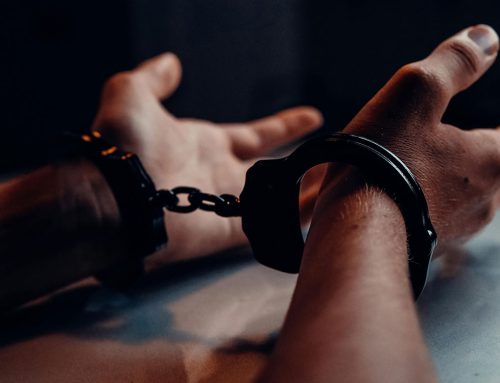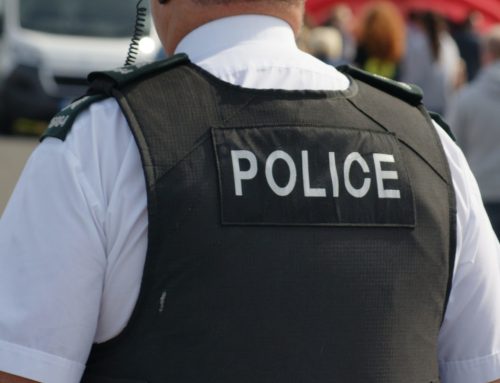According to the latest figures from Statistics Canada, 570 human trafficking incidents were reported to police in 2023, a slight decrease from the 597 reported in 2022. There was also a decrease in the rate of human trafficking (1.4 incidents per 100,000 population in 2023 compared with 1.5 in 2022).
While this drop may seem encouraging, it remains a significant concern. The lives of human trafficking victims are deeply impacted by exploitation and abuse.
Facing a charge for human trafficking is a serious matter. Whether you're looking for clarity or preparing a defence, this guide explains the key aspects of human trafficking law in Canada.
What is Human Trafficking?
Beyond its inherent criminality, human trafficking is a violation of human dignity. It involves the exploitation of individuals through force, fraud, or coercion. Once under a trafficker's control, the reality is stark: forced labour, sexual exploitation, or worse.
This isn't a one-size-fits-all crime. Trafficking takes many forms, and its victims come from all walks of life—men, women, children. Traffickers use a chilling array of tactics: physical violence, psychological manipulation, and threats against loved ones.
How is Human Trafficking Different From Kidnapping?
At first glance, human trafficking and kidnapping might look alike. But they're not the same. Kidnapping is about seizing someone unlawfully. It's quick, usually done for a specific demand—ransom, revenge, or power. Once the demand is met, the crime often ends.
Trafficking, though, is insidious. Trafficking is a long game, one that thrives on ongoing exploitation. It's not about holding someone in a basement or a remote location; human trafficking occurs when someone is forced to work, to serve, to comply. Over weeks, months, or years.
The difference lies in the intent and the aftermath. Kidnapping is immediate, often dramatic. Trafficking, on the other hand, is calculated, methodical, and sustained.
Legal Framework in Canada
Canada addresses human trafficking under both the Immigration and Refugee Protection Act (IRPA) and the Criminal Code. Section 118 of the IRPA prohibits trafficking people into Canada using coercion, deception, or force, carrying penalties of up to life imprisonment and/or a $1 million fine.
The Criminal Code of Canada expands this scope with sections like:
- Section 279.01: Main offence targeting all forms of trafficking.
- Section 279.02: Penalizing financial benefit derived from trafficking.
- Section 279.03: Criminalizing withholding or destroying identity documents to facilitate trafficking.
The law also distinguishes child trafficking (imposing stricter mandatory minimum sentences) and allows Canadian prosecution of trafficking offences committed abroad. These robust provisions reflect Canada's commitment to combat human trafficking in all its forms.
What is the Charge for Human Trafficking?
Whether in the context of sex trafficking or labor trafficking, the charges for human trafficking in Canada carry severe penalties.
Key Elements of a Human Trafficking Charge:
- The Offence: Organizing or facilitating the entry, recruitment, transportation, or harboring of individuals through deception, force, coercion, or fraud.
- The Mental Element: The accused must have knowingly engaged in the prohibited act. Intent is crucial in proving these charges.
- Penalties:
- Up to life imprisonment.
- A fine of up to $1 million.
- Both, depending on the circumstances of the case.
Aggravating Factors:
Certain elements can lead to harsher penalties, such as:
- Bodily harm or death resulting from the offence.
- Victims being subjected to sexual exploitation, humiliation, or degrading treatment.
- Crimes benefiting organized criminal groups.
- Crimes committed for financial profit or under particularly egregious circumstances.
It is important to note that trafficking charges often intersect with other offences, such as sexual assault, extortion, and immigration violations.
How Canada is Fighting to End Human Trafficking
ultifaceted, focusing on prevention, protection, prosecution, and partnerships. Short steps. Clear goals. But the problem is vast, and the stakes couldn't be higher.
At the heart of these efforts is the Canadian Human Trafficking Hotline (CHTH). A lifeline for victims. A tool for identifying trafficking and connecting those in need with immediate support. It's more than a number; it's hope.
Trafficking doesn't wear one face. It takes many forms: labour trafficking, commercial sex acts, forced marriages, and more. The government responds with legislation that cuts deep and programs designed to protect those most vulnerable. Migrant workers. Women. Children. No one should fall through the cracks.
Officials work tirelessly to raise awareness. They talk about control tactics—the tools traffickers use to manipulate: emotional abuse, threats, exploitation of intimate partners or family members. This knowledge arms communities, making them vigilant. And vigilance saves lives.












